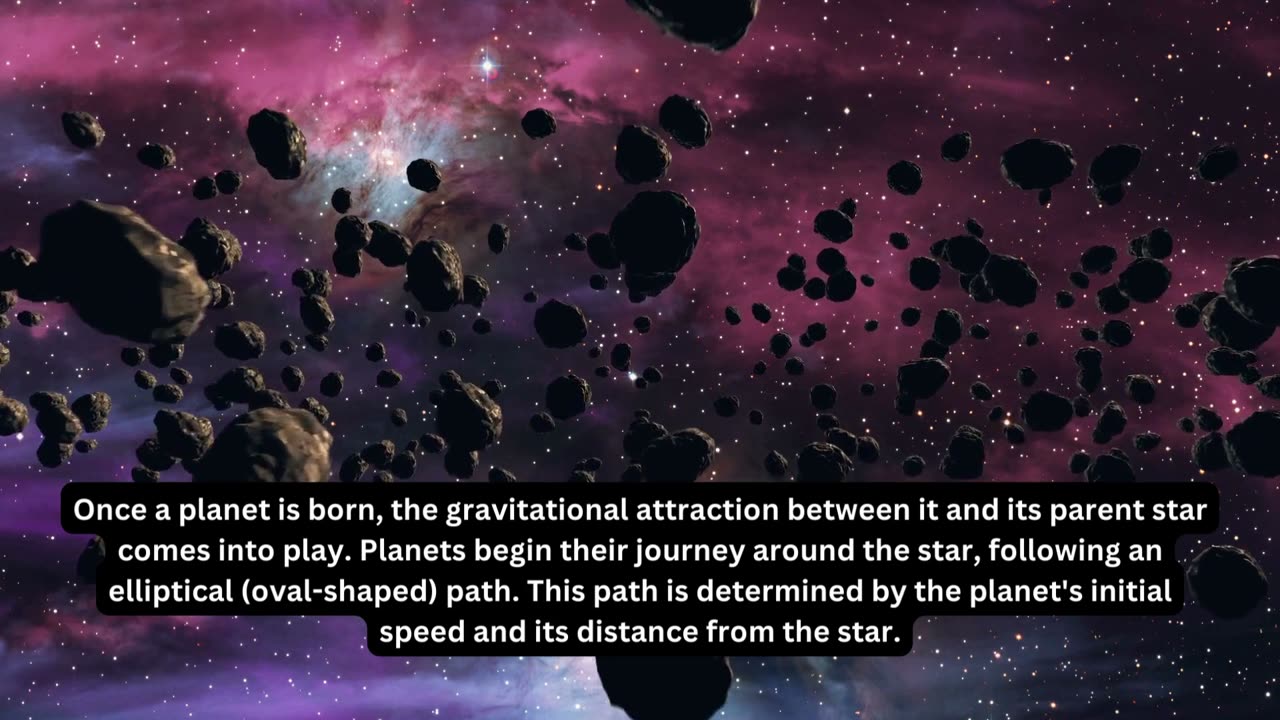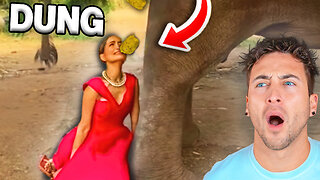Premium Only Content

Gravity and Planets: A Dance in the Cosmos
Gravity, the mysterious and powerful force that shapes the universe, is responsible for the intricate dance of planets around their parent stars. This force, described by Sir Isaac Newton in the 17th century, is a fundamental law of nature that governs the behavior of celestial bodies, including planets, moons, and even galaxies.
At the heart of this cosmic ballet are planets—captivating worlds that orbit stars like our Sun. This gravitational relationship is a delicate balance between the pull of the star's immense gravity and the planet's forward motion, preventing it from being drawn into the star's fiery embrace.
Picture a game of cosmic tug-of-war: On one side, you have the star's gravity, an invisible force that reaches out into space, compelling nearby objects to come closer. On the other side, you have the planet's motion, a result of its initial push or velocity. It's the perfect combination of these forces that keeps planets in orbit, locked in an endless looping path around their central stars.
The story begins with a cloud of gas and dust in space. Gravity starts to pull this cloud together, causing it to collapse in on itself. As the cloud gets smaller and denser, it starts to spin. In the center, where most of the material gathers, a new star is born. This newborn star is surrounded by a swirling disk of leftover gas and dust.
Within this disk, tiny particles start sticking together due to static electricity and other forces. These particles grow into planetesimals—small building blocks that continue to collide and combine, forming proto-planets. Over millions of years, these proto-planets continue to attract material until they become fully-fledged planets.
Once a planet is born, the gravitational attraction between it and its parent star comes into play. Planets begin their journey around the star, following an elliptical (oval-shaped) path. This path is determined by the planet's initial speed and its distance from the star.
Take Earth, for example. It orbits the Sun in an almost circular path, about 93 million miles away. Earth's gravity interacts with the Sun's gravity, causing it to curve around the Sun while still moving forward. This balance between gravity's pull and Earth's momentum keeps us in a stable orbit, experiencing seasons, day and night cycles, and all the marvels of our home planet.
-
 UPCOMING
UPCOMING
Rebel News
19 minutes agoConservative MP rips Doug Ford, Carney's decarbonization scheme, Security cam rules | Rebel Roundup
-
 UPCOMING
UPCOMING
Badlands Media
1 hour agoThe Daily Herold: Sept. 8, 2025
640 -
 LIVE
LIVE
LFA TV
14 hours agoLFA TV ALL DAY STREAM - MONDAY 9/8/25
4,245 watching -
 1:39:10
1:39:10
Nikko Ortiz
2 hours agoLive - Reaction Time, News, Politics, and More!
15.7K1 -
 LIVE
LIVE
The Mel K Show
1 hour agoMORNINGS WITH MEL K -Won’t Be Fooled Again? America Must Know the Hidden Truth About Post WWII Globalization 9-8-25
820 watching -
 LIVE
LIVE
The Shannon Joy Show
1 hour agoThe Vaccine Wars Intensify - DeSantis & Ladapo To END Medical Mandates - Trump Slams Initiative
191 watching -
 LIVE
LIVE
Grant Stinchfield
1 hour agoIf the Races Were Reversed… It’d Be National News, But White Victims Don’t Fit the Narrative
140 watching -
 3:28:16
3:28:16
Right Side Broadcasting Network
5 hours agoLIVE REPLAY: President Donald J. Trump Delivers Remarks to the WH Religious Liberty Commission - 9/8/25
41.9K17 -
 1:01:19
1:01:19
VINCE
4 hours agoNightmare In North Carolina | Episode 120 - 09/08/25
158K178 -
 1:49:43
1:49:43
Dear America
4 hours agoRepeat Offender Kills a Woman on a train!! WHY IS MSM SILENT!? + Are We Attacking Cartels??
99.2K78